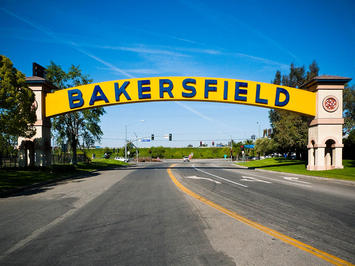
UCLA management professor Jerry Nickerson thinks he has found a solution to California’s housing affordability problems: high-speed rail. Based on years of data, he has concluded that some Japanese who work in Tokyo and other expensive cities make long commutes on high-speed trains to more affordable cities elsewhere in the country.
What a fantastically dumb idea. There are hundreds of thousands of acres of undeveloped private land right next to the Los Angeles and San Francisco-Oakland urban areas. Most of these acres have little agricultural value and those around San Francisco are currently being used as pasture or range land, meaning they support a few head of cattle, while many of the undeveloped acres around Los Angeles probably don’t even support livestock.
So, to protect these lands from development, California should spend $77 billion to $100 billion or more building a high-speed rail line to the Central Valley, which has some of the most productive farm land in the nation, so that houses can be built on that farm land rather than on the range lands around Los Angeles and the Bay Area.
It is true that housing in the Central Valley is more affordable than in the coastal metropolises, but it still not very affordable. According to the 2017 American Community Survey, median home prices were four times median family incomes in Bakersfield, which makes it the most affordable major urban area in California, but still makes it far less affordable than most urban areas in the rest of the country. Pretty much everywhere else is more affordable outside of the Pacific Coast states, Denver-Boulder, Miami, New York, and Boston. With a value-to-income ratio of 4.3, Fresno — the other big city on the planned high-speed rail line between Los Angeles and San Francisco — is less affordable than Boston’s 4.2.
Bakersfield and Fresno are more affordable than the coastal regions because they have less restrictive land-use regulations. According to this list, neither Fresno nor Bakersfield nor the counties in which they are located have urban-growth boundaries. But if these counties experienced an influx of newcomers who work in the LA or Bay areas, you can bet that they would soon be agitating for preservation of farm lands. Thus, the high-speed rail line would probably do more to make the Central Valley less affordable than it would to make the coastal areas more affordable.
In any case, the solution to California’s housing affordability problem is to make available for development the private rural lands outside of the coastal urban areas. Neither Los Angeles nor the Bay Area have a shortage of lands; they merely have a shortage of common sense.
This piece first appeared on The Antiplanner.
Randal O’Toole (rot@ti.org) is a senior fellow with the Cato Institute and author of the new book, Romance of the Rails: Why the Passenger Trains We Love Are Not the Transportation We Need, which was released by the Cato Institute on October 10.
Photo credit: nickchapman [CC BY 2.0], via Wikimedia Commons












